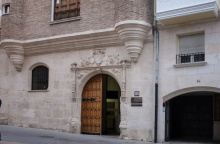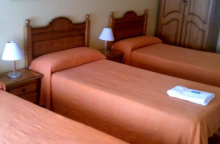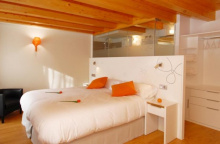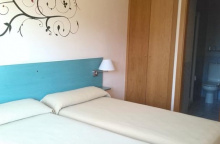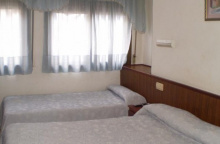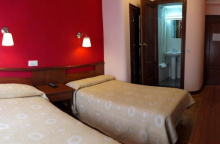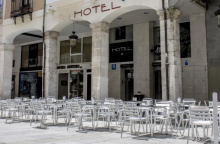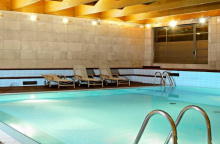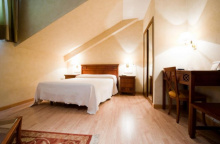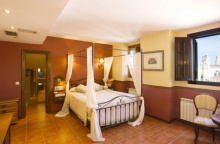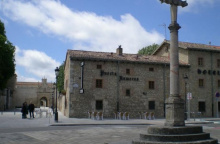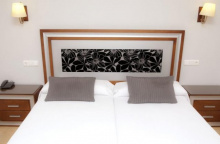Burgos at the end of the Camino Vasco
Camino Vasco
Burgos at the end of the Camino Vasco
Burgos is a city that brings history to life. For many pilgrims it is the first place on the Camino Francés that beckons a two-night stay; and rightly so, Burgos has a tremendous amount of museums, churches, one cathedral, a few monasteries, and a healthy (or not) number of bars and restaurants to keep you busy. The Calle San Lorenzo, off the Plaza Mayor, has several good options for tapas, and the Plaza Huerto del Rey has a few restaurants that lean towards a carnivorous diet.
On the not to miss list are the Catedral y Museo de Burgos in the very center of the city, and the Castillo de Burgos perched on the hillside overlooking the town.
The Museum of Human Evolution houses the artifacts from Atapuerca, and the Arco de Santa María (free visit) houses an exhibition hall.
The markings on southern entrance to the Plaza Mayor, with associated dates, indicated flood water levels.
Once at the far end of Burgos be wary of misleading signs (some quite official looking) that point the way to Villabilla. That town has been severed from camino traffic by the construction of a rail track and some efforts have been made to surreptitiously reconnect it.
With such a long history it should come as no surprise that the fiestas and festivals celebrated in Burgos range from solemn to spectacular. Among the more notable celebrations are the processions of Semana Santa (Holy Week), Corpus Christi (a moveable feast, celebrated on the Thursday after Trinity Sunday, which depends on Pentecost Sunday, which of course depends on Easter Sunday… the place to be is at the Monastery of Las Huelgas), and the festival of San Pedro and San Pablo (known together as Sampedros) in June.
Additionally, there are a number of more archaic events, some Moorish in origin and others pagan, that take place throughout the year. Burgos is a lively city.
Burgos was originally founded at the end of the 9th century in a bid to repopulate these northern plains. From the expulsions of the Muslims (around the end of the 11th century) it quickly became one of Castilla’s most important city. It was here that the Catholic Kings Isabel and Ferdinand welcomed home Christopher Columbus after his second voyage to the new world, and it was here where General Francisco Franco was publicly proclaimed as Generalísimo in 1936 and which would serve as the dictators base of operations until the end of the civil war.
Set along the wonderful río Arlanzon, the city was built with massive walls and even more massive gates. In spite of this, the territory of Burgos (but more to the point Castilla) was widely disputed. The seed for much of the fighting was the will of King Fernando-I, who although wise enough to rule over the northern regions, was not too clever in managing his estate. He chose to divide the north into three regions upon his death, with each region going to a different heir.
Alfonso VI received León, García received Galicia, Sancho II received Castilla, and his daughter Urraca received the city of Zamora.
More land disputes followed and in the end it was Alfonso that reigned over the whole territory and was crowned the emperor of the Iberian Peninsula. This was at the end of 11th century, and the wealth collected by Alfonso from tariffs throughout the peninsula was transformed into palaces and a Cathedral, catapulting Burgos into prosperity.
Burgos is also the home of El Cid, a fierce warrior, and cunning politician. He was banished from the city by King Alfonso for having forced him to take an oath attesting to his innocence in the death of his brother Sancho. El Cid would eventually turn down an invitation to return and fight for Alfonso, and instead traveled east to Valencia where he maneuvered himself into a kingdom of his own. He is now buried in the Cathedral.
The road out of Burgos is, thankfully, much shorter than the road in. The camino from here enters the meseta, with its endless plains of wheat. The landscape, while seemingly unremarkable, offers a wealth of flora and fauna and opportunities for peaceful contemplation.
